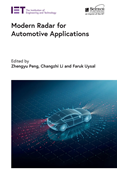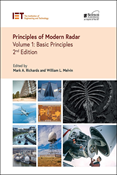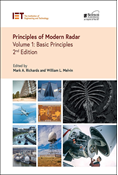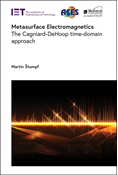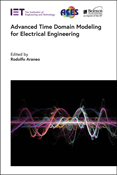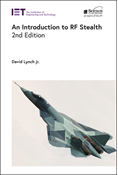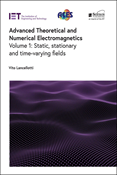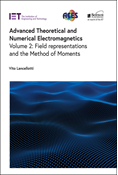- Agricultural Engineering and Technology
- Applied Physics
- Built Environment
- Computing and Networks
- Control, Robotics and Sensors
- Electrical Regulations
- Electromagnetics and Radar
- Energy Engineering
- Healthcare Technologies
- History and Management of Technology
- IET Codes and Guidance
- Manufacturing
- Materials, Circuits and Devices
- Model Forms
- Security
- Telecommunications
- Transportation
Electromagnetics and Radar
Showing 31 - 40 of 206 results
-
In stock
Modern Radar for Automotive Applications
Zhengyu Peng, Changzhi Li, Faruk Uysal 2022
This book provides an up-to-date account of the status of research and implementation of automotive radars. The book covers fundamental, novel and essential technologies, such as MIMO, waveform design, and interference mitigation. The book includes chapters on exterior and interior uses of radar technology.
-
In stock
Principles of Modern Radar
Volume 1: Basic Principles, 2nd Edition
Mark A. Richards, William L. Melvin 2022
Principles of Modern Radar: Basic Principles is a comprehensive text for courses in radar systems and technology, a professional training textbook for formal in-house courses and for new hires; a reference for ongoing study following a radar short course and a self-study and professional reference book.
-
In stock
Principles of Modern Radar (e-book)
Volume 1: Basic Principles, 2nd Edition
Mark A. Richards, William L. Melvin 2022
Principles of Modern Radar: Basic Principles is a comprehensive text for courses in radar systems and technology, a professional training textbook for formal in-house courses and for new hires; a reference for ongoing study following a radar short course and a self-study and professional reference book.
-
In stock
Non-Redundant Near-Field to Far-Field Transformation Techniques
Claudio Gennarelli, Flaminio Ferrara, Rocco Guerriero, Francesco D'Agostino 2022
This book outlines the role of the near-field to far-field (NF-FF) transformations in the framework of EM measurements, their development and the current state of art. The classical NF-FF transformation techniques (without and with probe compensation) are summarized.
-
In stock
Bioelectromagnetics in Healthcare
Advanced sensing and communication applications
William Whittow 2022
This book covers the newest applications of bioelectromagnetics in the healthcare sector, providing valuable insights into the current and future possibilities of bioelectromagnetics in twelve cohesively structured chapters. Each chapter is written by experts in the field.
-
In stock
Metasurface Electromagnetics
The Cagniard-DeHoop time-domain approach
Martin Štumpf 2022
The book provides original analytical and computational methodologies for solving the EM interaction with modern metasurface structures. New sophisticated modeling methods and closed-form solutions are explored, thereby providing enablers for future developments of thin-layer-based technologies.
-
In stock
Advanced Time Domain Modeling for Electrical Engineering
Rodolfo Araneo 2022
The book is a comprehensive discussion of the most advanced time-domain modeling methods and applications in electromagnetics and electrical engineering. It provides guidelines about why some choices must be made among the principal modeling approaches and then discusses numerical and analytical methods, and applications.
-
In stock
An Introduction to RF Stealth, 2nd Edition
David Lynch Jr. 2021
This expanded, revised and updated new edition covers two major topics: low observables and low probability of intercept (LO and LPI) of Radars and data links, collectively sometimes called stealth. Each chapter includes examples, student exercises, references and counterpart appendices.
-
In stock
Advanced Theoretical and Numerical Electromagnetics
Volume 1: Static, stationary and time-varying fields
Vito Lancellotti 2021
This comprehensive resource conveniently combines advanced topics of electromagnetic theory, a high level of mathematical detail, and the well-established ubiquitous Method of Moments applied to the solution of practical wave-scattering and antenna problems formulated with surface, volume, and hybrid integral equations.
-
In stock
Advanced Theoretical and Numerical Electromagnetics
Volume 2: Field representations and the Method of Moments
Vito Lancellotti 2021
This comprehensive resource conveniently combines advanced topics of electromagnetic theory, a high level of mathematical detail, and the well-established ubiquitous Method of Moments applied to the solution of practical wave-scattering and antenna problems formulated with surface, volume, and hybrid integral equations.

